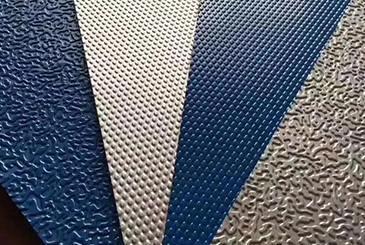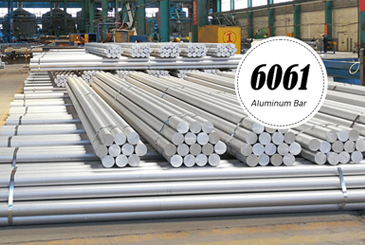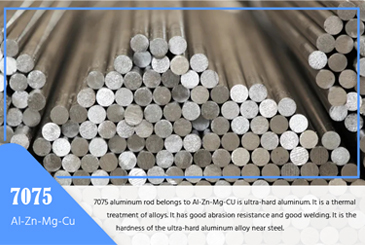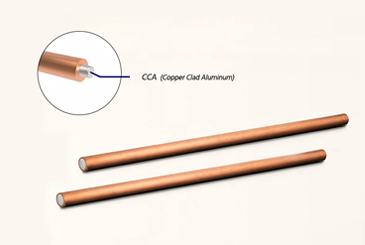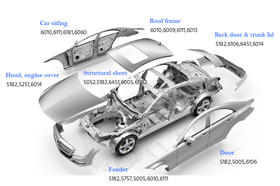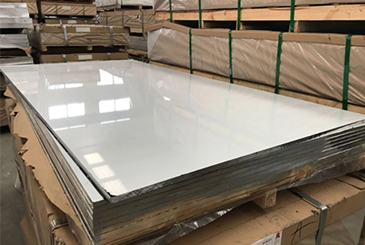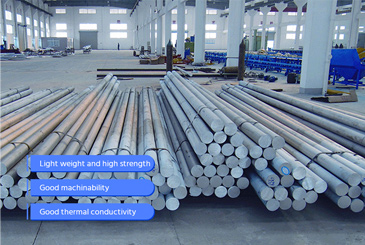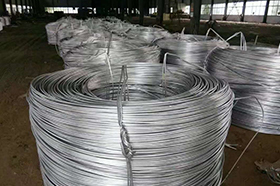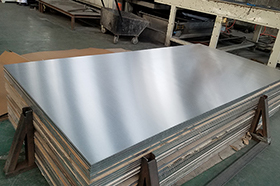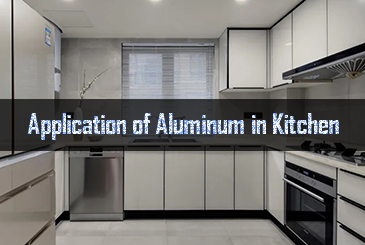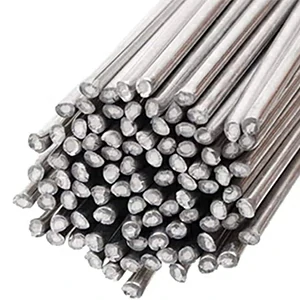Chalco's aluminum to copper brazing rods are made from low-melting aluminum-zinc alloy with a narrow melting range.
They are optimized for aluminum brazing and offer excellent wetting due to higher zinc content. The filler flows smoothly and forms strong, gap-free joints.
Each rod includes a non-corrosive flux core, eliminating the need for additional flux.
Aluminum to copper brazing rods specifications
Complies with AWS A5.8, AS 9100 and EN ISO 17672.
Certified under IATF 16949, RoHS 2011/65/EU, REACH EC No. 1907/2006, and ISO 9001:2015.
We provide mill test certificates, free samples, and MSDS documents.
Third-party inspection and factory audit support are available to ensure product quality and buyer confidence.
Instant QuoteRecommended aluminum to copper brazing alloys
We offer a range of brazing alloys for aluminum to copper joining, including popular grades like AL 822, AL 718, 4045, 4047, and AlSi10Cu4.
These alloys meet the strength, thermal conductivity, and environmental standards required in HVAC, automotive, and electronics industries.
- Recommended brazing temperature: 950–1000°F (510–537°C)
- Appearance: Silver color with white flux core
- Packaging: Aluminum to copper brazing rods, packed in sets of 5 or 8 (custom packaging available)
- Rod length: 8 inches, 18 inches (8" rods fit conveniently in repair kits)
With cesium-based flux or flux-cored design
- AL 718 Aluminum Brazing Rods with Flux

Excellent flow characteristics. Perfect for brazing aluminum-to-copper joints in thin-walled or precision parts, improving both efficiency and appearance.
Without cesium-based flux, external flux required
- AL 34

A high-strength brazing alloy designed for aluminum-to-copper joints in automotive cooling systems. Delivers durability and structural integrity.
- 4045 Brazing Rod

High silicon content with excellent wetting properties. Suitable for large surface area applications and joints requiring efficient heat transfer.
- Sil-Fos-Al

A specialized alloy for stable aluminum-to-copper brazing in electrical connectors. Offers excellent conductivity and corrosion resistance.
- AlSi12Cu1 (EN standard)

European-certified alloy compatible with most brazing systems. Supports fast and reliable aluminum-to-copper assembly.
- AlSi10Cu4 (EN standard)
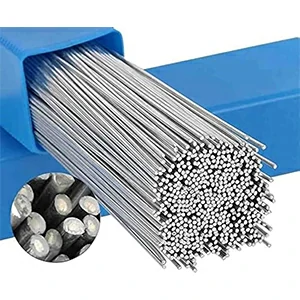
Offers high thermal conductivity and mechanical strength. A reliable solution for copper-to-aluminum brazing in heat exchangers and pressure systems.
Aluminum to copper brazing rods performance
With a low melting range and optimized aluminum-zinc alloy, our brazing rods ensure strong, corrosion-resistant joints and smooth wetting for aluminum-to-copper applications in HVAC and auto repairs.
To achieve ideal capillary joints, ensure tight fit-up between parts and keep the heat treatment temperature below the alloy's solidus.
Instant Quote| Composition | Range |
| Zi (Zinc) | Balance |
| Al (Aluminum) | 22.00% ± 1.0 |
| Other Elements, Total | 0.15% Max |
| Solidus | 826°F (441°C) |
| Liquidus | 905°F (471°C) |
| Recommended Brazing Temperature | 950-1000°F (510-537°C) |
| Density (Lbs/in3) | 0.19 |
Aluminum to copper brazing rods advantages
Low-temperature brazing that protects base metals
Reduces thermal stress and prevents burn-through—ideal for thin-walled and precision parts.
High-strength joints with corrosion resistance
Forms reliable bonds with excellent sealing, heat cycle stability, and resistance to galvanic corrosion.
Excellent wetting and smoother brazing
Fills tight gaps smoothly for clean, consistent joints with low risk of voids.
Compatible with multiple brazing methods
Supports various heat sources; flux-cored options simplify operation—no extra flux needed.
Eco-friendly and regulation compliant
Meets RoHS/REACH standards. Full documentation and third-party inspection supported.
Cost-effective with better value
Lower cost than welding, with high efficiency—perfect for production or field repairs.

Aluminum to copper brazing rods applications
Our aluminum to copper brazing rods are widely used in HVAC/R systems, automotive manufacturing, and electrical connections.
They are suitable for joining all brazable grades of aluminum and copper, as well as brass and other metals—especially in applications requiring high strength, conductivity, and sealing performance.
Instant QuoteHVAC systems
Used for brazing copper tubes to aluminum fins, distributors, and headers in air conditioners, heat pumps, and refrigeration systems.
Contact us now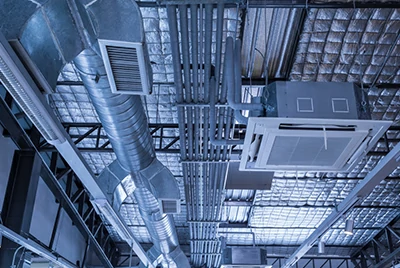
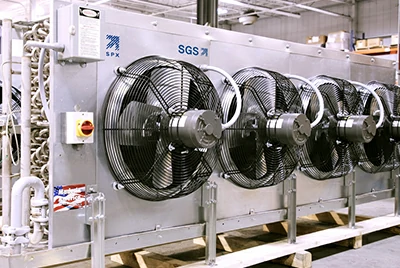
Refrigeration and cooling equipment
Ideal for connecting aluminum evaporators to copper lines and servicing commercial coolers, ice makers, and display cabinets.
Contact us nowAerospace
Applied in conductive aluminum-to-copper joints for lightweight structures, including busbars and cooling systems in aircraft, satellites, and drones.
Contact us now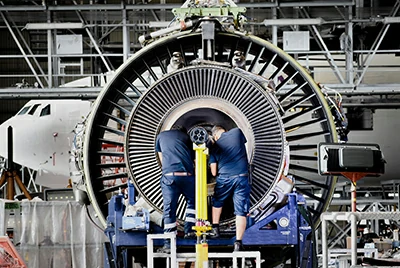

Marine and offshore engineering
Used in HVAC and electrical systems on ships and offshore platforms, ensuring corrosion-resistant joints between aluminum housings and copper/brass terminals.
Contact us nowAutomotive industry
Suitable for brazing aluminum heat exchangers to copper fittings and joining aluminum-copper pipes in EV battery cooling systems.
Contact us now
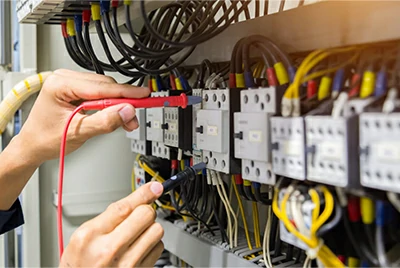
Electrical connections and cable terminals
Used for brazing or pre-coating aluminum cable lugs, aluminum-to-copper splices, and joints with copper, brass, or plated terminals.
Contact us nowPartners and customer success stories
Over the years, our aluminum to copper brazing rods have been widely used in the production lines and service systems of leading global brands in HVAC, refrigeration, and automotive manufacturing.
Trusted by both OEMs and aftermarket service providers, our products have earned a strong reputation for reliability and performance.
We supply customized aluminum to copper brazing rods to Daikin Industries, Ltd., one of Japan's top air conditioning manufacturers.
These rods are used extensively in Daikin's R32 refrigerant-based systems, especially for joining internal copper tubes and aluminum fins.
The filler metal features a low melting point, excellent flow characteristics, and a non-corrosive, eco-friendly design—meeting Daikin's technical demands for energy efficiency, lightweight construction, and sustainable refrigeration systems.
The product is now steadily supplied to Daikin's factories in Japan, China, and Vietnam, supporting efficient mass production and cost control.
Instant Quote
Services provided by Chalco
Custom alloy and packaging solutions
We tailor alloy composition, rod length, flux type, and packaging according to your process needs. OEM/ODM services are available to support brand customization.
Technical support and welding solutions
We offer guidance on brazing methods, temperature control, and process optimization. Sample testing and welding trial analysis are available upon request.
Flexible packaging and fast delivery
Available in 5-stick, 8-stick, or bulk packaging, with optional custom labels. Large inventory ensures fast delivery within 7 days. Supports both LCL and FCL shipments.
Complete compliance documentation
We provide MSDS, RoHS, REACH, ISO 9001 certifications, along with mill test certificates, chemical composition reports, and third-party test support.
Factory audit & third-party inspection support
We welcome audits and inspections from SGS, BV, TUV, and other organizations. Transparent supply chain to meet corporate compliance standards.
Multilingual support and dedicated project service
Bilingual communication (Chinese & English) with support across North America, Europe, Southeast Asia, and the Middle East. A dedicated account manager ensures seamless coordination from selection to delivery.
Post-braze cleaning
After brazing, the cesium-based flux leaves non-hygroscopic and non-corrosive residues. In most cases, no additional cleaning is required, and the parts can proceed directly to assembly or use.
If cleaning is necessary, a 50/50 mixture of nitric acid and distilled water can be used to treat the brazed area. Submerging the part in the solution and gently agitating it helps remove any remaining flux residue.
Note: Perform cleaning in a well-ventilated area and use protective gloves, goggles, and appropriate safety equipment.
Properties of brazed joints
The performance of a brazed joint depends on several factors, including the mechanical properties of the base metals, joint design, and metallurgical compatibility between the base and filler materials.
For aluminum brazing, a joint clearance of 0.003–0.006 inches (0.076–0.152 mm) per side is recommended to promote optimal capillary action and joint strength.
Compared to typical low-temperature brazing or soldering alloys, the higher zinc content in Al-Cop Braze can significantly enhance joint strength when proper design conditions are met.
Warranty & Storage
When stored in its original, unopened container, the product remains valid for 90 days from the date of shipment.
Ideal storage conditions include a temperature range of 65–75°F (18–24°C) in a clean and dry environment.
If separation of brazing paste occurs, it may require remixing to ensure uniform consistency.
It is important to note that if no issues are encountered, the product can typically be used beyond the 90-day period under proper storage.
For flux-cored wires, when stored under appropriate conditions, full functionality is maintained for up to 2 years.
Safety information
The operation and maintenance of brazing equipment and facilities should comply with ANSI Z49.1 – Safety in Welding, Cutting, and Allied Processes.
How to braze copper to aluminum (quick guide)
- Clean both surfaces thoroughly
- Use a proper filler rod (e.g., AL 822 with flux core)
- Heat the joint evenly, focusing more on copper
- Feed the rod once aluminum reaches ~950°F (510°C)
- Let it cool naturally—no cleaning needed if flux-cored
For step-by-step instructions, check our full blog on how to braze copper to aluminum.
 How to Braze Copper to Aluminum
How to Braze Copper to Aluminum Copper to aluminum brazing made simple—with the right rod and heat.
We maintain long-term partnerships with major clients, including leading Japanese air conditioning brands, Korean automotive heat exchanger manufacturers, and HVAC engineering companies in Europe and North America.
Our products have been exported to regions such as North America, Europe, Japan, Korea, Southeast Asia, the Middle East, and South America.



